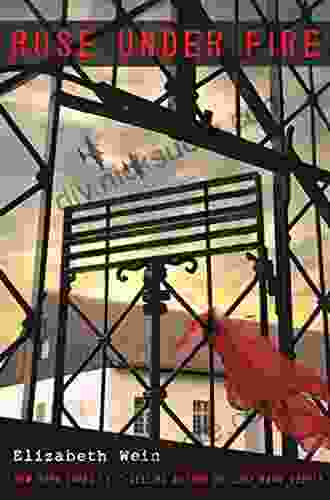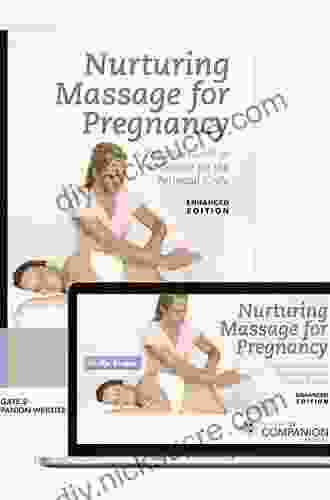Sometimes I Worry Too Much But Now Know How to Stop: A Detailed Guide to Overcoming Anxiety

In the tapestry of life, where joy and sorrow intertwine, worry emerges as an unwelcome companion, casting a shadow over our hearts and minds. It whispers insidious doubts, fuels irrational fears, and saps us of our vitality. If you find yourself consumed by excessive worry, know that you are not alone. Many individuals struggle with this common yet debilitating condition. The good news is that it is possible to break free from the shackles of worry and reclaim your inner peace.
4.6 out of 5
| Language | : | English |
| File size | : | 3732 KB |
| Lending | : | Enabled |
| Screen Reader | : | Supported |
| Print length | : | 60 pages |
This comprehensive guide will provide you with a wealth of knowledge, proven techniques, and actionable steps to help you overcome anxiety and live a more fulfilling life. Through a journey of self-discovery, we will explore the root causes of worry, challenge negative thought patterns, and cultivate resilience in the face of life's inevitable challenges.
Understanding the Nature of Worry
Worry, a persistent form of anxiety, stems from an apprehensive anticipation of future events. It is a normal human response to perceived threats or uncertainties. However, excessive worry becomes pathological when it consumes our thoughts, interferes with our daily lives, and impairs our ability to function effectively.
Worry can manifest in various forms, including:
- Rumination: Endlessly dwelling on negative thoughts and past experiences.
- Catastrophizing: Exaggerating the potential negative outcomes of events.
- Mind Reading: Assuming what others are thinking and feeling, often attributing negative intentions.
- Fortune Telling: Predicting the future with certainty, envisioning worst-case scenarios.
These cognitive distortions fuel the vicious cycle of worry, trapping us in a spiral of negative thinking.
Identifying the Triggers of Worry
To effectively address worry, it is crucial to identify the specific situations, thoughts, or events that trigger your anxiety. Common triggers include:
- Life Transitions: Major life events such as moving, starting a new job, or experiencing a significant loss.
- Uncertainty: Situations involving unpredictable outcomes or lack of control.
- Perfectionism: Setting unrealistic standards and striving for flawless outcomes.
- Social Anxiety: Fear of criticism, embarrassment, or rejection in social situations.
Understanding your triggers can empower you to develop targeted coping mechanisms and strategies to manage anxiety.
Cognitive Restructuring: Challenging Negative Thoughts
Cognitive restructuring is a powerful technique that involves challenging and reframing negative thoughts. By replacing irrational fears with more realistic and positive perspectives, you can gradually rewire your thought patterns and break the cycle of worry.
Here are some steps to practice cognitive restructuring:
- Identify Negative Thoughts: Pay attention to the specific thoughts that trigger your worry.
- Evaluate Evidence: Examine the evidence for and against your negative thoughts. Are they based on facts or assumptions?
- Develop Alternative Thoughts: Generate more positive and realistic alternative thoughts that challenge your negative beliefs.
- Test Alternative Thoughts: Gradually expose yourself to situations that evoke worry and practice using your alternative thoughts.
With persistent practice, cognitive restructuring can help you develop a more balanced and resilient mindset.
Mindfulness and Relaxation Techniques
Mindfulness involves paying attention to the present moment without judgment. By practicing mindfulness, you can cultivate greater awareness of your thoughts and feelings, and learn to respond to them in a more skillful way.
Some mindfulness techniques include:
- Body Scan Meditation: Bringing attention to different parts of your body, noticing sensations and releasing tension.
- Mindful Breathing: Focusing on the rhythm of your breath, observing the rise and fall of your chest.
- Walking Meditation: Paying attention to the sensations of your feet on the ground and the movement of your body.
Relaxation techniques, such as deep breathing exercises, progressive muscle relaxation, and visualization, can also help reduce stress and anxiety.
Coping Mechanisms for Anxiety: Managing Triggers
In addition to cognitive and mindfulness techniques, developing effective coping mechanisms is essential for managing anxiety in the face of triggers.
Here are some coping strategies:
- Identify Coping Mechanisms: Determine what activities or strategies help you cope with anxiety, such as exercise, listening to music, or spending time in nature.
- Practice Progressive Muscle Relaxation: Tense and release different muscle groups to relieve tension.
- Engage in Deep Breathing Exercises: Inhale deeply through your nose and exhale slowly through your mouth to calm your nervous system.
- Use Visualization Techniques: Imagine a peaceful or comforting scene to reduce anxiety.
- Seek Support: Reach out to trusted friends, family members, or a mental health professional for support during challenging times.
Developing a repertoire of coping mechanisms can provide you with the tools you need to navigate anxious situations with greater confidence.
Lifestyle Modifications for Anxiety Relief
Adopting healthy lifestyle habits can significantly contribute to reducing anxiety levels.
Consider these lifestyle modifications:
- Exercise Regularly: Engage in physical activity to release endorphins, which have mood-boosting effects.
- Get Enough Sleep: Aim for 7-9 hours of quality sleep each night to restore your body and mind.
- Nourish Your Body: Consume a balanced and nutritious diet to support your physical and mental well-being.
- Limit Caffeine and Alcohol: Excessive caffeine and alcohol consumption can exacerbate anxiety.
By prioritizing self-care and healthy living, you can create a more supportive environment for managing anxiety.
Professional Help: When to Seek It
If excessive worry significantly impacts your daily life, interferes with your relationships, or causes persistent distress, do not hesitate to seek professional help. A therapist or counselor can provide personalized support, evidence-based therapies, and guidance to help you overcome anxiety.
Therapy options for anxiety include:
- Cognitive Behavioral Therapy (CBT): A structured therapy that focuses on identifying and changing negative thought patterns and behaviors.
- Exposure and Response Prevention (ERP): A gradual exposure to anxiety-provoking situations while learning to manage anxiety responses.
- Medication: In some cases, medication may be prescribed to alleviate anxiety symptoms.
Seeking professional help can provide you with the necessary support and tools to effectively manage anxiety and improve your overall well-being.
: Embracing a Worry-Free Life
Overcoming excessive worry is a journey of self-discovery, resilience, and empowerment. By understanding the nature of worry, identifying your triggers, and implementing proven strategies and techniques, you can gradually break free from the shackles of anxiety and reclaim your inner peace.
Remember, you are not alone in this journey. With persistence, self-compassion, and a willingness to seek support when needed, you can overcome worry and live a more fulfilling, anxiety-free life. May this guide serve as a beacon of hope and empowerment on your path to freedom from worry.
4.6 out of 5
| Language | : | English |
| File size | : | 3732 KB |
| Lending | : | Enabled |
| Screen Reader | : | Supported |
| Print length | : | 60 pages |
Do you want to contribute by writing guest posts on this blog?
Please contact us and send us a resume of previous articles that you have written.
 Fiction
Fiction Non Fiction
Non Fiction Romance
Romance Mystery
Mystery Thriller
Thriller SciFi
SciFi Fantasy
Fantasy Horror
Horror Biography
Biography Selfhelp
Selfhelp Business
Business History
History Classics
Classics Poetry
Poetry Childrens
Childrens Young Adult
Young Adult Educational
Educational Cooking
Cooking Travel
Travel Lifestyle
Lifestyle Spirituality
Spirituality Health
Health Fitness
Fitness Technology
Technology Science
Science Arts
Arts Crafts
Crafts DIY
DIY Gardening
Gardening Petcare
Petcare Businessnews Publishing
Businessnews Publishing Gemma Milne
Gemma Milne Tom Jordan
Tom Jordan Alex Karp
Alex Karp Christopher Small
Christopher Small Dr Stephanie Bloodworth Psyd
Dr Stephanie Bloodworth Psyd Sergey Kosarevsky
Sergey Kosarevsky John L Parker Jr
John L Parker Jr Lucy Christopher
Lucy Christopher Noah Gift
Noah Gift Anthony J Onwuegbuzie
Anthony J Onwuegbuzie Dale P Clemens
Dale P Clemens Susan Aud Sonders
Susan Aud Sonders Rebecca Black
Rebecca Black Karl Knopf
Karl Knopf N J Enfield
N J Enfield Dame Darcy
Dame Darcy Sam Warburton
Sam Warburton Alison Cotter
Alison Cotter Cailin O Connor
Cailin O Connor Adrian Dater
Adrian Dater Megan Vickers
Megan Vickers Certsquad Professional Trainers
Certsquad Professional Trainers Susan Cooper
Susan Cooper Ari Tuckman
Ari Tuckman Vernon Trafford
Vernon Trafford Rebecca A Moyes
Rebecca A Moyes John Brenkus
John Brenkus Paul Watzlawick
Paul Watzlawick Steve Angers
Steve Angers Eric Blehm
Eric Blehm William F Mann
William F Mann Tammara Webber
Tammara Webber Joel David Hamkins
Joel David Hamkins Fernanda Pirie
Fernanda Pirie Sarah Jo Brown
Sarah Jo Brown Jonathan S Rose
Jonathan S Rose Aaron Kleinmeyer
Aaron Kleinmeyer Philip Yarrow
Philip Yarrow Loretta Sponsler
Loretta Sponsler Matthieu Ricard
Matthieu Ricard Dave Lowry
Dave Lowry Linda Tuhiwai Smith
Linda Tuhiwai Smith Adam Savage
Adam Savage Lisa Murphy
Lisa Murphy Shanterra Mcbride
Shanterra Mcbride Russell Sher
Russell Sher A H Almaas
A H Almaas Frost Kay
Frost Kay Blair Holden
Blair Holden Upton Sinclair
Upton Sinclair Jim Allen
Jim Allen Karla Helbert
Karla Helbert Mj Porter
Mj Porter Abigail Burd Lcsw Pmh C
Abigail Burd Lcsw Pmh C Pintip Dunn
Pintip Dunn Shenyang Guo
Shenyang Guo Mike Branon
Mike Branon A G Howard
A G Howard Lindsey Lapointe
Lindsey Lapointe R A Mejia
R A Mejia Helen Buckley
Helen Buckley Oba Ilari Aladokun
Oba Ilari AladokunA G
 John L Messina
John L Messina Seth M Holmes
Seth M Holmes Max Tegmark
Max Tegmark Len Fisher
Len Fisher Kerri Hummingbird Sami
Kerri Hummingbird Sami Corina Morariu
Corina Morariu Tiara R Brown
Tiara R Brown Dane Huckelbridge
Dane Huckelbridge Jamal Moustafaev
Jamal Moustafaev Raymond J Carroll
Raymond J Carroll Andrea Falk
Andrea Falk Marks Prep
Marks Prep Jane Austen
Jane Austen David Spiegelhalter
David Spiegelhalter Giordano Scalzo
Giordano Scalzo Angela Himsel
Angela Himsel Dmv Test Bank
Dmv Test Bank Leigh Newman
Leigh Newman Bruce Lansky
Bruce Lansky David G Taylor
David G Taylor William Minto
William Minto Eugene Don
Eugene Don Vitaly Pedchenko
Vitaly Pedchenko Katerina Griffith
Katerina Griffith Jordan B Peterson
Jordan B Peterson David H Barlow
David H Barlow Patrick Meechan
Patrick Meechan Helen E Johnson
Helen E Johnson Daniel S Pierce
Daniel S Pierce Barry Werth
Barry Werth Mandy Rivers
Mandy Rivers Rens Bod
Rens Bod Peter Maas
Peter Maas K A Riley
K A Riley Bree Moore
Bree Moore Sarah Sutton
Sarah Sutton Shelly Mazzanoble
Shelly Mazzanoble Jonathan Mckee
Jonathan Mckee Stephen R Lawhead
Stephen R Lawhead Rosie Garthwaite
Rosie Garthwaite A J Hamler
A J Hamler John D Currid
John D Currid Lilin Yang
Lilin Yang Eric Sevareid
Eric Sevareid Christiane Kutik
Christiane Kutik Joseph Mctaggart
Joseph Mctaggart Val Emmich
Val Emmich Akash Kapur
Akash Kapur Robert P Harris
Robert P Harris Glenn Patron
Glenn Patron Anghel Leonard
Anghel Leonard Michael D Coogan
Michael D Coogan David Magee
David Magee Andreas Quast
Andreas Quast Richard Heath
Richard Heath Dr Tricia Groff
Dr Tricia Groff Ed Webster
Ed Webster Sadie Robertson Huff
Sadie Robertson Huff Catherine Rodgers
Catherine Rodgers Hazel Holmes
Hazel Holmes Lindsey Vonn
Lindsey Vonn Din Daniels
Din Daniels Chelsea Crockett
Chelsea Crockett Todd Downs
Todd Downs Garret Romaine
Garret Romaine Valerio Varesi
Valerio Varesi Paul Mccarthy
Paul Mccarthy Bob Frye
Bob Frye Ridge Magee
Ridge Magee Marlynn Jayme Schotland
Marlynn Jayme Schotland Jennifer Longmore
Jennifer Longmore King Solomon
King Solomon A L Graziadei
A L Graziadei Homeira Qaderi
Homeira Qaderi Tanya Selvaratnam
Tanya Selvaratnam Sandra Niche
Sandra Niche Susanne Foitzik
Susanne Foitzik Thomas Mcguane
Thomas Mcguane Boston T Party
Boston T Party Heather Anderson
Heather Anderson Christine Wheeler
Christine Wheeler Randy Friedman
Randy Friedman Catherine Stonehouse
Catherine Stonehouse Jan Morris
Jan Morris Don Fink
Don Fink Roxanne Martin
Roxanne Martin Diane Stresing
Diane Stresing Brad K Chambers
Brad K Chambers Yasu
Yasu A J Messenger
A J Messenger Joe Navarro
Joe Navarro Pete Ripmaster
Pete Ripmaster Philip Golding
Philip Golding Dan Limbaugh
Dan Limbaugh Roger Zelazny
Roger Zelazny Jon Gillespie Brown
Jon Gillespie Brown Amos Yong
Amos Yong Cynthia Ulrich Tobias
Cynthia Ulrich Tobias Filippo Coarelli
Filippo Coarelli Jennifer Trainer Thompson
Jennifer Trainer Thompson Ilya Ru
Ilya Ru David A Wells
David A Wells Mike Tidwell
Mike Tidwell Katrina Abbott
Katrina Abbott Okina Baba
Okina Baba William Bauer
William Bauer Scientia Media Group
Scientia Media Group Cyndi Kinney
Cyndi Kinney John Williams
John Williams Diane Burke Fessler
Diane Burke Fessler Michael Lanza
Michael Lanza John Mordechai Gottman
John Mordechai Gottman Dr Kevin Leman
Dr Kevin Leman Cassandra Clare
Cassandra Clare Thomas C Tabor
Thomas C Tabor A J Stewart
A J Stewart Manoush Zomorodi
Manoush Zomorodi Elisabeth Fassas
Elisabeth Fassas A M Wilson
A M Wilson Eva Mauer
Eva Mauer Chris I Naylor
Chris I Naylor Ken Alder
Ken Alder Barbara J Bain
Barbara J Bain Ken Dryden
Ken Dryden Tony Wright
Tony Wright Remy Agee
Remy Agee Kathy Koch
Kathy Koch Rick Telander
Rick Telander Dr Howard Rankin
Dr Howard Rankin Niall Ferguson
Niall Ferguson Rysa Walker
Rysa Walker Kathlyn Gay
Kathlyn Gay Crystal Cestari
Crystal Cestari Susan Striker
Susan Striker Jm Mason
Jm Mason Grady Hendrix
Grady Hendrix Alf Wilkinson
Alf Wilkinson Monte Burke
Monte Burke Jennie Finch
Jennie Finch Jennifer Senior
Jennifer Senior David Remnick
David Remnick Cathy A Malchiodi
Cathy A Malchiodi Sherrilyn Kenyon
Sherrilyn Kenyon Charles Edward Chapel
Charles Edward Chapel Mark Ryan
Mark Ryan James Baldwin
James Baldwin Nicole Conway
Nicole Conway Day Leitao
Day Leitao Bryan Berg
Bryan Berg Mia Kankimaki
Mia Kankimaki Timothy J Gawne
Timothy J Gawne Brian Clegg
Brian Clegg Toni Natalie
Toni Natalie Rebecca Pelky
Rebecca Pelky Eileen Tracy
Eileen Tracy Linh Phung
Linh Phung Peter Shelton
Peter Shelton Emily Evans
Emily Evans Raymond M Smullyan
Raymond M Smullyan A Roger Ekirch
A Roger Ekirch Byron Pitts
Byron Pitts Jonalu Johnstone
Jonalu Johnstone Mrjamvad
Mrjamvad Mark Obmascik
Mark Obmascik David Deutsch
David Deutsch Jonathan Eig
Jonathan Eig Andrew Henderson
Andrew Henderson Tripp Bowden
Tripp Bowden Joe Pepitone
Joe Pepitone Joshua Akin
Joshua Akin The R A
The R A Lilith Mclelland
Lilith Mclelland Bob Trueman
Bob Trueman Timothy C Urdan
Timothy C Urdan William Monk
William Monk Sky Marsen
Sky Marsen Erin Watt
Erin Watt Matthew J Friedman
Matthew J Friedman Jose M Forero Bautista
Jose M Forero Bautista W Timothy Gallwey
W Timothy Gallwey Armin A Brott
Armin A Brott Jamie Vardy
Jamie Vardy Rafe Esquith
Rafe Esquith A J Angulo
A J Angulo Virginia Willis
Virginia Willis Lisa Pease
Lisa Pease Charles Butler
Charles Butler Nancy Mckenzie
Nancy Mckenzie A G Cairns Smith
A G Cairns Smith Todd Gitlin
Todd Gitlin Thomas R Martin
Thomas R Martin Louis Jacques Dorais
Louis Jacques Dorais Iasha King
Iasha King E S Wynn
E S Wynn Thomas Hager
Thomas Hager A R Vasishtha
A R Vasishtha Alyssa Padgett
Alyssa Padgett Rina Kent
Rina Kent Gordon Macquarrie
Gordon Macquarrie Lillian Tibbles Phd
Lillian Tibbles Phd Jennifer L Armentrout
Jennifer L Armentrout Dirk F Moore
Dirk F Moore Lauren Oliver
Lauren Oliver Peter Godfrey Smith
Peter Godfrey Smith William Ramsey
William Ramsey Michelle Maccarthy
Michelle Maccarthy Anne Deans
Anne Deans Micha Gorelick
Micha Gorelick Ryan Gray
Ryan Gray Gabrielle Coleman
Gabrielle Coleman Soap2day Publication
Soap2day Publication Dale Dougherty
Dale Dougherty Cath Smith
Cath Smith David J Vanbergen Jr
David J Vanbergen Jr Francis Fukuyama
Francis Fukuyama Winston Starr
Winston Starr Kevin Adams
Kevin Adams Kenn Bivins
Kenn Bivins Kenneth Cline
Kenneth Cline Kenay Keira
Kenay Keira Harry Yoon
Harry Yoon Peter Goldenthal
Peter Goldenthal Jim Vernes
Jim Vernes William C Oakes
William C Oakes Zander Brumbaugh
Zander Brumbaugh Todd Rose
Todd Rose John Almberg
John Almberg Chris Diamond
Chris Diamond Bob Plager
Bob Plager Amanda Ostrander
Amanda Ostrander Leandro Taub
Leandro Taub A J Mackinnon
A J Mackinnon Shauna Lynn Panczyszyn
Shauna Lynn Panczyszyn Michael Labossiere
Michael Labossiere Bruce Collier
Bruce Collier Steven Raichlen
Steven Raichlen Meghan Leahy
Meghan Leahy Bill Jones
Bill Jones John Halligan
John Halligan Natalie Pompilio
Natalie Pompilio A L Knorr
A L Knorr Eric Armstrong
Eric Armstrong Lauren Muhlheim
Lauren Muhlheim Peter Nichols
Peter Nichols Steve Hindman
Steve Hindman Watt Key
Watt Key Lyndall Clipstone
Lyndall Clipstone John Long
John Long Peter Rees
Peter Rees Carrie Harper
Carrie Harper Gary Gruber
Gary Gruber Jeff Kane
Jeff Kane Judi Garman
Judi Garman Pardha S Pyla
Pardha S Pyla Russell Davis
Russell Davis A J Mackenzie
A J Mackenzie Val Mcdermid
Val Mcdermid Ray Ordorica
Ray Ordorica Josh Skeen
Josh Skeen Sherine Hamdy
Sherine Hamdy Georgia Varozza
Georgia Varozza Harrison Fluss
Harrison Fluss Sonya Chappell
Sonya Chappell Caspar Craven
Caspar Craven Ken Castor
Ken Castor Matilda Ramsay
Matilda Ramsay Lou Zambello
Lou Zambello Marcus Butler
Marcus Butler Anna Goldsworthy
Anna Goldsworthy Sharie King
Sharie King Matt Brown
Matt Brown Laura Pohl
Laura Pohl Dean R Johnson
Dean R Johnson Roy Richard Grinker
Roy Richard Grinker A K Davidson
A K Davidson Tsao Lin E Moy L Ac Msom
Tsao Lin E Moy L Ac Msom Mitch Landrieu
Mitch Landrieu Jean Philippe Dionne
Jean Philippe Dionne Anji Andrews
Anji Andrews Dan Romanchik Kb6nu
Dan Romanchik Kb6nu Michael Lardon
Michael Lardon Olivia Smith
Olivia Smith Rachael Allen
Rachael Allen Jennifer N Smith
Jennifer N Smith Rekha Ramcharan
Rekha Ramcharan Lyla Lee
Lyla Lee Sean Skahan
Sean Skahan Calvin L Chou
Calvin L Chou Charles Szypszak
Charles Szypszak William Scott Wilson
William Scott Wilson Scott A Ostrow
Scott A Ostrow Cristian Salcescu
Cristian Salcescu Flo Perry
Flo Perry Saxton Pope
Saxton Pope Alexander Greenmaj
Alexander Greenmaj Michael Dell
Michael Dell Helen Marot
Helen Marot Leslie Stager
Leslie Stager Kenneth Cloke
Kenneth Cloke Arlin Smith
Arlin Smith Michael Shingleton
Michael Shingleton Jack Grimshaw
Jack Grimshaw George Francis Dow
George Francis Dow Zen Lylah
Zen Lylah Taha Sochi
Taha Sochi Helen Fitzgerald
Helen Fitzgerald Kelly Starrett
Kelly Starrett Lou Tabory
Lou Tabory Tim Flanagan
Tim Flanagan A F Stewart
A F Stewart A M Strickland
A M Strickland Walter Dean Myers
Walter Dean Myers Bruce Tremper
Bruce Tremper Heather Gudenkauf
Heather Gudenkauf Peter Zheutlin
Peter Zheutlin Larit Levy
Larit Levy Marc S Sabatine
Marc S Sabatine Hicham And Mohamed Ibnalkadi
Hicham And Mohamed Ibnalkadi Polly Moore
Polly Moore Todd Wanerman
Todd Wanerman Bear Heart
Bear Heart Anne Sigismund Huff
Anne Sigismund Huff Freya Hoffmeister
Freya Hoffmeister Stan Skinner
Stan Skinner Dr Alan Whitcomb
Dr Alan Whitcomb Ray Bradbury
Ray Bradbury Stan Tenen
Stan Tenen Francis Pryor
Francis Pryor Nick Jackson
Nick Jackson Jec Aristotle Ballou
Jec Aristotle Ballou Raymonde Carroll
Raymonde Carroll Zen Faulkes
Zen Faulkes Chuck Whelon
Chuck Whelon Dawn Huebner
Dawn Huebner Sandra Swenson
Sandra Swenson A J Carlisle
A J Carlisle
Light bulbAdvertise smarter! Our strategic ad space ensures maximum exposure. Reserve your spot today!
 Jayson PowellFollow ·18.4k
Jayson PowellFollow ·18.4k Jim CoxFollow ·9.5k
Jim CoxFollow ·9.5k Donovan CarterFollow ·11.2k
Donovan CarterFollow ·11.2k Eugene ScottFollow ·14.2k
Eugene ScottFollow ·14.2k Rod WardFollow ·12.6k
Rod WardFollow ·12.6k Dave SimmonsFollow ·10.9k
Dave SimmonsFollow ·10.9k Gabriel MistralFollow ·6.4k
Gabriel MistralFollow ·6.4k Elton HayesFollow ·15.9k
Elton HayesFollow ·15.9k

 Franklin Bell
Franklin BellHow Genesis Preserves Science Of Consciousness In...
The book of Genesis is...

 Ted Simmons
Ted SimmonsAt Day's Close, Night in Times Past
As the sun dips...

 Kenneth Parker
Kenneth ParkerRose Under Fire: Code Name Verity - A Heartbreaking and...
In the annals of...

 Jerry Hayes
Jerry HayesNurturing Massage for Pregnancy: A Comprehensive Guide to...
Pregnancy is...

 Blake Bell
Blake BellFill in the Blank: Word Kind of Animal Farm for Kids and...
This interactive fill-in-the-blank...
4.6 out of 5
| Language | : | English |
| File size | : | 3732 KB |
| Lending | : | Enabled |
| Screen Reader | : | Supported |
| Print length | : | 60 pages |














